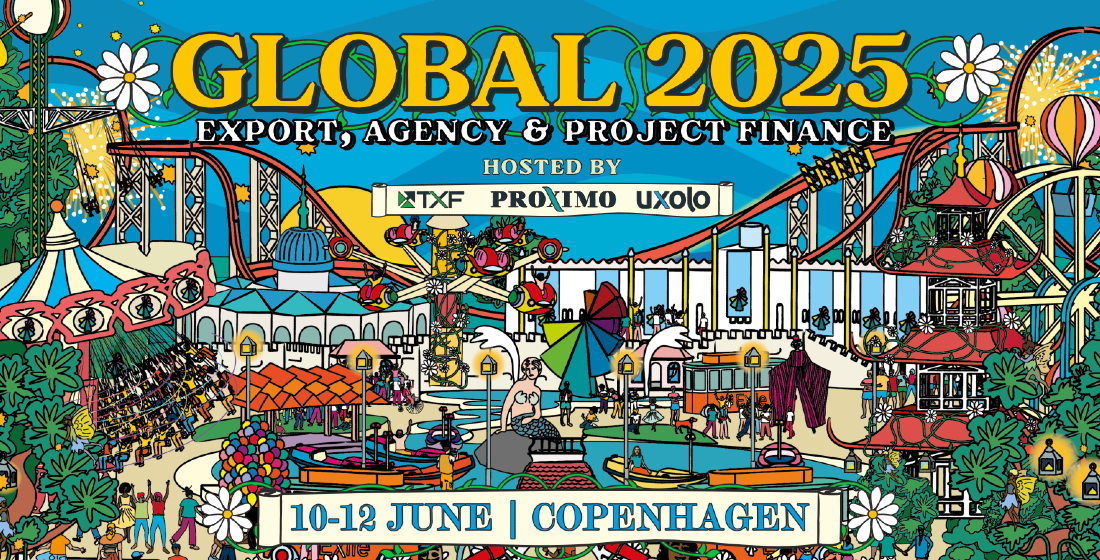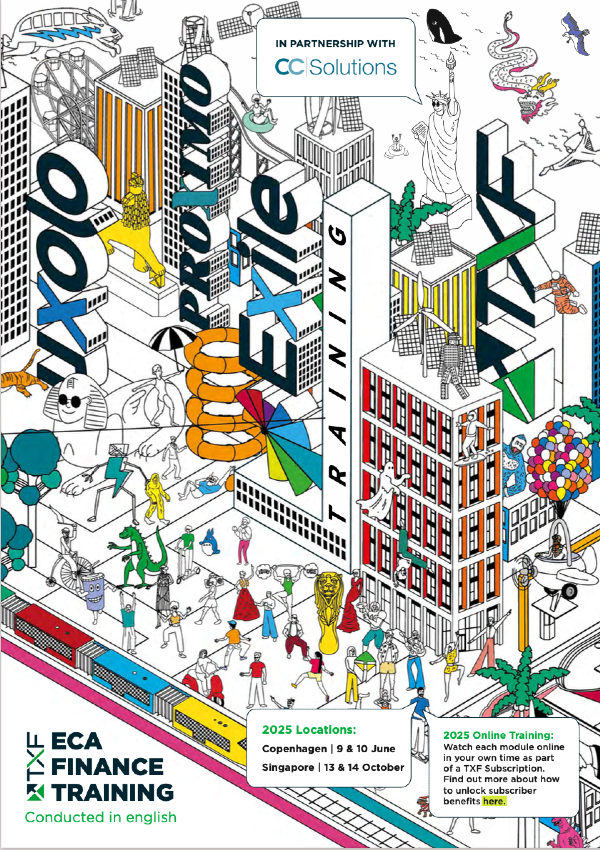Calmer times for the chameleon banks
BAFT Europe heralds another year of change in store, underpinned by confident banks, secure in their brands and their ability to partner rather than defend from fintechs.

Traditionally the BAFT (Bankers Association for Finance and Trade) Europe Bank to Bank forum, the first event in the trade calendar for many, has been the stepping off point for both transaction and trade finance bank professionals to gauge the temperature of the year ahead. In the absence of a ‘state of the union’, it feels like a state of the union.
The event on 14-16 January was in London again, and the theme was ‘thriving through change’, with a jaunty chameleon motif on the banners. To anthropomorphise (as some speakers did – the event is held under the Chatham House Rule, so quotes cannot be attributed) – the chameleon was smiling.
Indeed, the tone was markedly more upbeat than the past two years, at least cautiously optimistic even given the backdrop of the Brexit ‘meaningful vote’ happening during the first evening cocktail reception.
“Major mental transitioning” by banks
One point of particular departure this year is that fintechs are no longer being talked about as competition. Although discussion was of collaboration the buzzword was ‘co-creation’. Fintechs are being more seen as a resource. Technology itself seems more scary at the inception – when fintechs emerge, they are shiny and troubling. Familiarity means they become tools. There has been a “major mental transitioning” undertaken by banks as one fintech speaker said as most fintechs are going ‘deep and narrow’ rather than ‘broad and shallow’.
That means fintechs are looking intensely at specific areas of the market. They are not in a position where they want to (or can) compete with banks as they have neither the liquidity, the balance sheets, the legitimacy (in terms of regulation in certain markets) nor indeed the wider trust, that is now one of the core differentiators for banks.
If fintechs are seen as being a benign influence, that view only goes so far. As one speaker conceded, should Google or Amazon (or for that matter Alibaba) choose to enter the wholesale market, or dip their toes in the waters of financing trade, all bets would be off.
Nonetheless, the fact that transaction bankers feel confident their brands are trusted – particularly by corporate treasury and at board level – is in itself a step change a decade on from the global financial crisis.
And the regulatory changes the banks have been through in the wake of that crisis still feature highly as subjects of discussion – among them Basel III (IV), AML and KYC regulation, PSD2 (described as the biggest change in the payments landscape). In an audience poll, the biggest challenge facing transaction banking is compliance and regulation, with 49% putting it as their foremost concern, above cyber risk worries.
Those regulations themselves have helped improve trust in banks. Has a new equilibrium been reached? Not entirely. As one speaker said: “It was bad enough when banks were competing with each other, now there’s political winds and fintech. But on one level we deal with that day to day and it can be just another cost/scenario planning exercise.”
But politics trumps economics (pun intended)
As a driver of change, it’s impossible to pull apart current economics from politics. A broadly positive consensus by unusually cheerful economists at the event was peppered with caveats. One was the emergence of a new acronym – QT (which to many means ‘on the QT’ – or hush hush, but in this instance quantitative tightening (balance sheet shrinkage by central banks including the US Federal Reserve, the corollary of quantitative easing post crisis).
Brexit uncertainty was an issue for FIs, but more in the uncertainty than the deed itself, given the amount of costly preparation banks have already gone through over the past two years.
The end of the ‘stable duopoly’ of the World Trade Organisation (WTO) and NAFTA which have held sway since the WTO was set up in 1995 comes amid NAFTA reforms and President Trump’s actions pushing certain tariffs above WTO upper boundaries was a point of concern. Interestingly, some 90% of world trade goes on without fanfare under WTO guidelines, for the most part at levels that may make regional trade agreements appear unnecessary. Even so, the statistic that China now accounts for 10.2% of world trade in volume (not value) terms, the exact same as the US, is a dramatic change in the global trade backdrop. The trade negotiations between the two have yet to find an equilibrium – and a potential RMB devaluation could be an issue.
No doubting digitisation – but pace is slow and reality bites
Digitisation of trade and transaction banking continues to dominate discussion of change. Asked when they thought trade would become more digitised/automated, around 48% of the audience didn’t expect that change to come before five to 10 years. In the same poll, the majority of the audience (57%) saw the main impediment to trade digitisation as being the fact that the trade ecosystem is too large and complex.
The view from players from blockchain consortia is that beyond proofs of concept (POC), deployment is a completely different issue, and is really difficult. In theory, blockchain itself doesn’t replace digital solutions, but could allow them to scale. Avoiding so-called ‘digital islands’ that cannot talk to each other, or just become bigger digital islands, is a matter of consistent legal treatment, standards on identities and consensus on transport layers and the ability to translate between different ‘rails’.
Creating a standards body itself requires some form of consensus. And even consensus on the business model of consensus isn’t easy (or, like making sausages, it is not necessarily pretty). Universal Trade Network (UTN) is one such body, but it remains a work in progress whose creators are still wary of talking about.
Having a chance to ‘play’ or at least see some of the blockchain consortia in action in live demos at the event certainly went some way for trade bankers to see and normalise the techniques (or at least interfaces) of doing trade this way.
Regulation remains decentralised
Know Your Thing (KYT) may become an issue alongside KYC, as one speaker asserted. If there are going to be 50 billion devices connected to the internet by 2020 (it seems so far away, but it’s only next year), to quote figures from Cisco (back in 2010), banks should be aware of other economic actors. Even if those figures are likely an overestimate, the ‘internet of value’ is something banks need to watch.
If compliance and regulation remains one of the biggest concerns for the audience, financial crime compliance (FCC) and KYC were legitimately discussed as being either the end, or the beginning of trade finance. Derisking of correspondent relationships has been one consequence of FCC and KYC regulation. Initiatives to improve the efficiency of detection and prevention of breaches in KYC or FCC were discussed.
The conclusions were that it remains a legal feeding frenzy, that regulators continue to devolve enforcement onto banks because of their lack of resources and that attempts to centralise utilities to help KYC and FCC aren’t easy. Several high-profile, very expensive, enforcement actions in the early stages have been enough to keep banks worried. And however much banks may want ‘whitelists’ rather than ‘blacklists’ to point out good and bad actors, the former is too hard to police.
One interesting point raised was (somewhat counterintuitively) that decentralisation of global KYC and FCC appears to remain the best way of complying despite certain initiatives trying to centralise and stop duplication of effort. And as one speaker noted, compliance has helped clarify processes and improve them. “It’s not better or worse, just more of it and constant.”
But cyberthreats persist, and evolve
More worrying though was the banality of interfaces demonstrated (in a session on cybersecurity) on the dark web. It’s unsettling to see that even illegal arms or drugs dealers or purveyors of stolen credit cards are concerned about ‘likes’ to push product.
That cyber security threats are evolving to include parastatal nation states staging large scale deep attacks is a particular problem for the banking industry. That is certainly one area where collaboration and notification between banks is in evidence. For banks, good cybersecurity is a braking system. If the brakes work, security is good. And at a more personal level, mobile phone security is ever more important as that is an easy breach point.
Thriving through change
As an event themed on change, the future leaders segment of BAFT bodes well for the future of transaction banking in itself. More than 30 rising stars of the transaction banking industry were introduced for 2019. And while transaction banking itself may suffer from something of a PR problem as a career path, as one speaker noted, there are very few lines of business that have such visibility in a bank. So all in all, a resilient and optimistic group of bankers.





